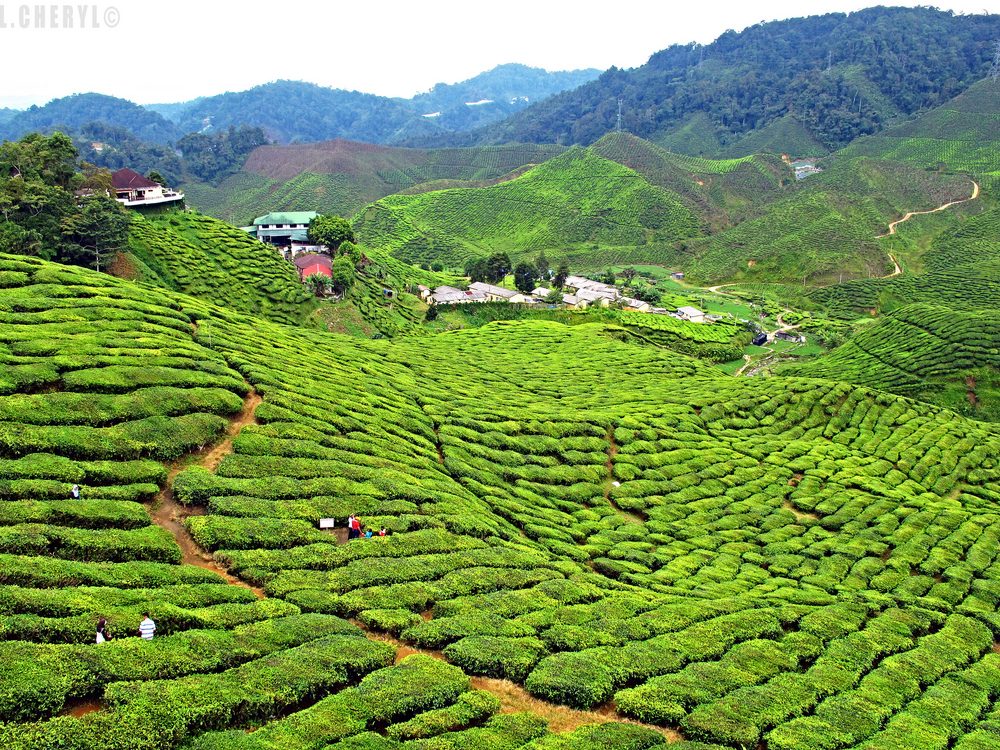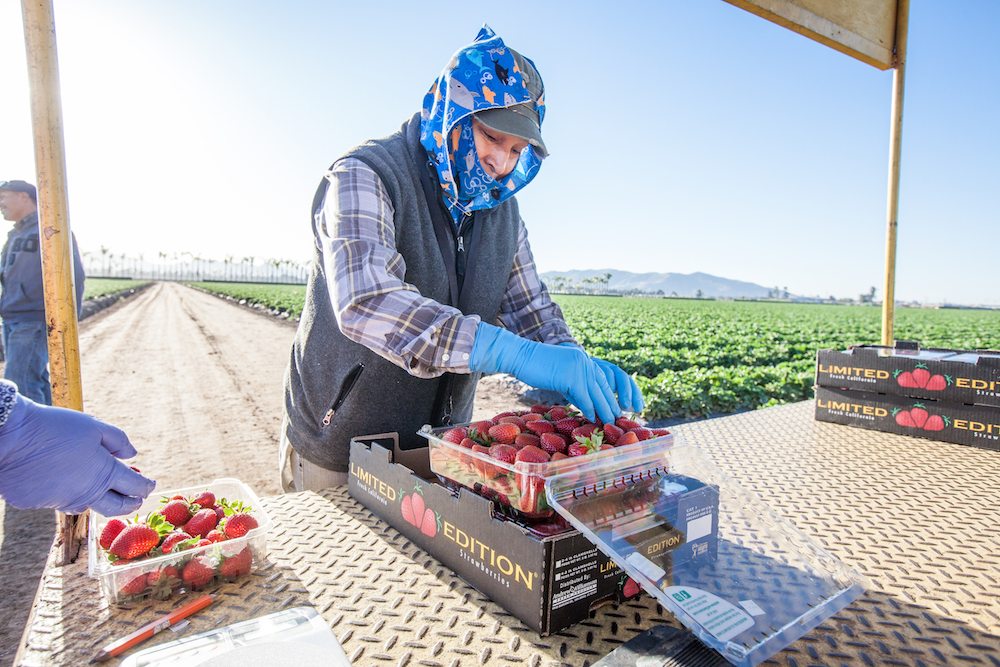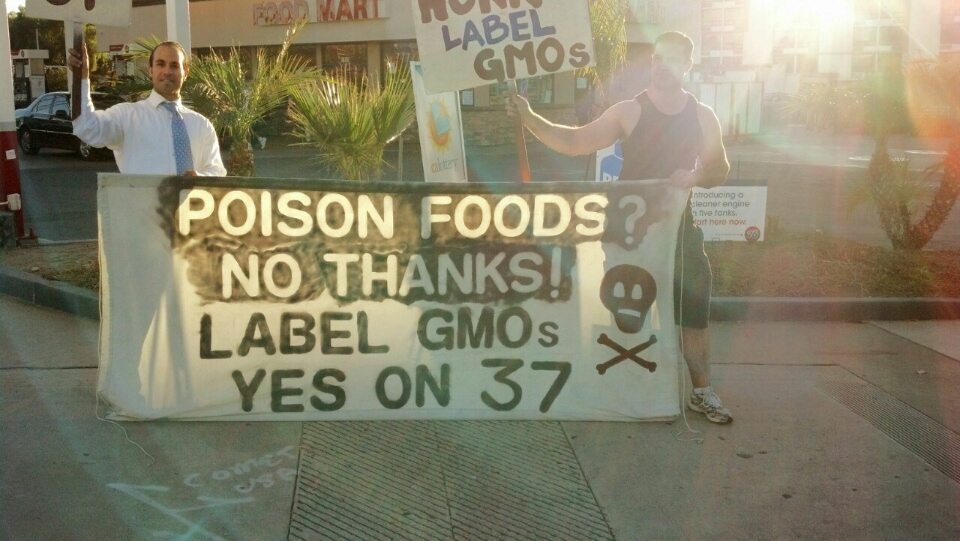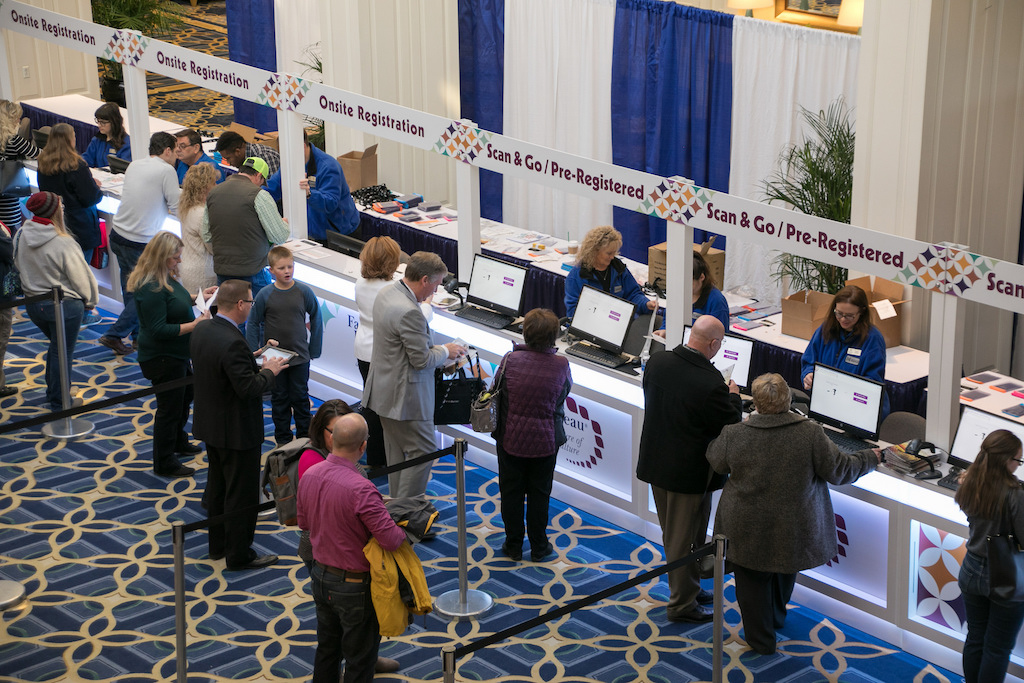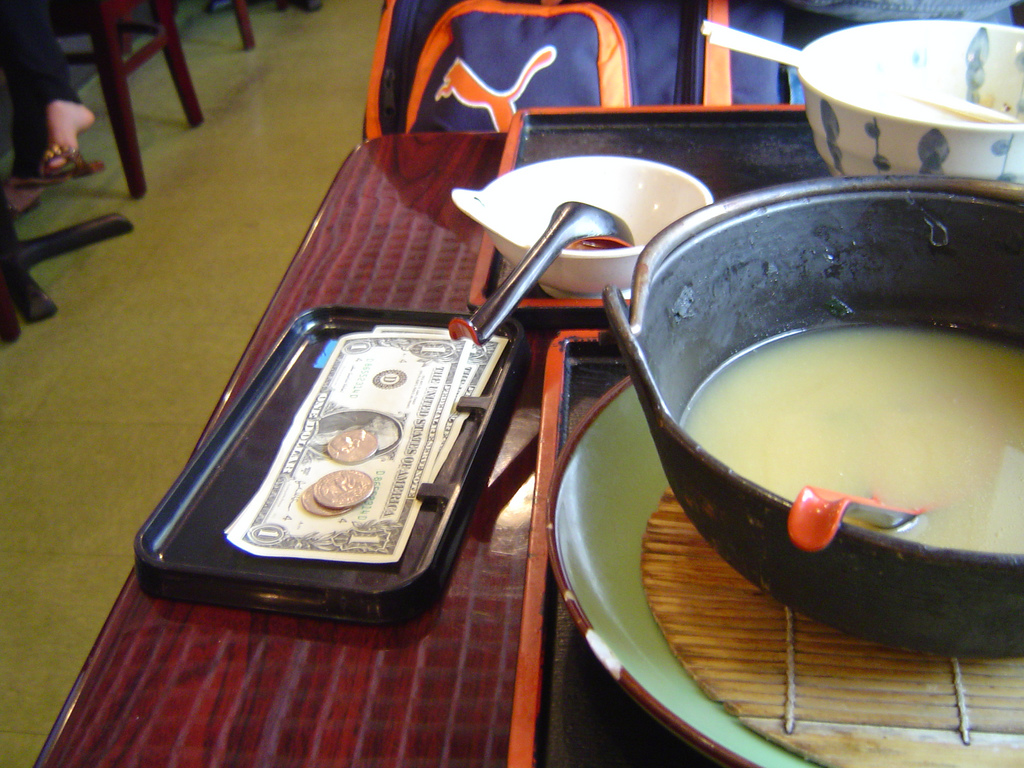It’s a facile solution to the thorny dilemmas of conscious consumerism: Slap a certification on it. Don’t want to eat pesticides? Buy organic. Frustrated with Big Organic? There’s always biodynamic. Want to avoid Frankenfoods? Non-GMO Project has your back. Cruelty-free meat? There’s Certified Humane. The list goes on.
And when it comes to “fair” food (which generally means slavery-free, supportive of farmers, etc.), the best choice is even less clear. There are at least seven fair trade labels out there, and each represents a different definition of the term. There’s Fair Trade and Fairtrade, Fair For Life, the Fair Food Program. Bear with me. This isn’t a story about memorizing food label minutiae, nor will I tell you the labels mean nothing. As a matter of fact, there’s evidence that the most effective fair food certification programs absolve the consumer of practically all responsibility. That’s right: there’s a version of the “fairer food” story that doesn’t end at a decal on a coffee bag.
A disclaimer: certifications are an imperfect answer to the dinner table angst that accompanies a food documentary marathon. By definition, each logo guarantees the alleviation of a single grocery-aisle anxiety—there’s no catch-all “this is good food” stamp of approval. And a certification’s meaning necessarily shifts as it gains momentum. Organic used to connote pesticide-free; local used to mean small-scale. A feel-good label can be a rationalization for a higher price, too—of course McDonald’s is going to adopt “cage free” as soon as it can, without spending too much money to make sure “cage free” doesn’t mean “a slightly larger cage” or “no cages but really crowded basement-like conditions.”
But regardless of their shortcomings and inevitable appropriation, certifications do more than assuage consumer nail-biting. They help define squishy terms like “fair,” and they raise awareness of the issues they’re meant to advance. These days, farmworker justice—a key pillar in the fight for “fair food”—is gaining visibility, and the certifiers have taken note.
“One of the roles certifications can do is raise awareness and get people saying, ‘Why would there be a certification for farmworker justice?,’” Kerstin Lindgren, author of a new comparative report on farmworker justice certifications, explains. “Maybe that’s the entry point. I can buy this tomato instead of this tomato, but the important thing is to raise awareness for immigration reform.”
Lindgren’s report, “Justice in the Fields: A Report on the Role of Farmworker Justice Certification and an Evaluation of the Effectiveness of Seven Labels,” takes a look at how certifiers are defining “fair” and what measures they’ve put in place to enforce their labels. There’s plenty to learn about the merits of each label (Rainforest Alliance = “not qualified”, Fair Trade USA = “approach with caution”), but the broader story is about the changing definition of farmworker justice—and the evolving roadmap for how to get fair. But first, some background.
 Flickr/Howard Lak
Flickr/Howard Lak Fairtrade certified chocolate
Fair trade 1.0. Fair trade name recognition predates the local food craze by a long shot. Popularized by entities like Ten Thousand Villages, which opened its first U.S. store in 1972, and Equal Exchange, which helped make fair trade a part of the specialty coffee craze in the 1990s, the certification applied only to small-scale farms at first. At the time, the eco-social certification meant things like advance payments for farmers, a premium price, and increased access to markets. Buying fair trade was a guarantee that your coffee came from an independently-owned smallholder farm that was a member of a democratic cooperative.
A shift. But since 2010, there’s been a dramatic shift in the fair trade movement. Here’s where it gets complicated. Transfair (USA), the leading third-party certification entity, rebranded and took the name “Fair Trade USA.” Early advocates like Equal Exchange saw this as the co-optation of a term they’d worked hard to make credible. Edith Rassell, Ph.D., a Minister for Economic Justice at the United Church of Christ—an early partner in the fair trade movement—wrote in a blog post that this move was “seen by many as an outrageous attempt to brand itself as and take over the entire fair trade movement in the U.S.” Meanwhile, Transfair (USA)’s press release said, “the updated, simplified name and brand identity will support the organization’s efforts to increase the awareness of Fair Trade.”
The next year, the newly minted Fair Trade USA resigned its membership from Fairtrade International.
Around that time, Fair Trade USA started allowing farms that used hired labor to certify their coffee. That was a departure from fair trade 1.0. It meant the sole participants in this category were no longer smallholder farms, and the potential benefits for the people on the first rung of the supply chain became a lot less clear. Instead of guaranteeing that the price premium for a bag of fair trade beans went directly to a small-scale farmer, the money went into a collective fund for workers (not directly into their paychecks). Perhaps more importantly, opponents argued, consumers had no way to distinguish between fair trade coffee grown on an estate and fair trade coffee grown by smallholder farmers. Opponents saw the decision to include coffee estates as a weakening of the standards. Fair Trade USA argued that it made fair trade more inclusive. (For more background, this handy, if not exactly objective, graphic novel from Equal Exchange outlines that shift in more colorful terms.)
That blog post from the United Church of Christ puts it succinctly: “Fair Trade USA began certifying fair trade coffee plantations (in addition to plantations growing other crops), the very plantations from which the fair trade system was originally designed to protect farmers.”
That shift meant lots and lots more fair trade coffee beans entered the market (remember, it was around that time that seemingly all coffeehouse coffee was suddenly fair trade certified) and it meant a lot more visibility for the fair trade label. The Fair Trade USA press release archive from that time is mostly ebullient: “Fair Trade up, charitable giving down.” “Fair Trade Certified sales up 30 percent in grocery stores.” “Mainstream consumers drive fair trade sales up 24 percent.”
During this time, other eco-social certifications also gained name recognition—most notably, the Rainforest Alliance.
In 2011, Fair Trade USA loosened up its rules to let bigger farms get certified. The Rainforest Alliance, which was formed in 1989, also collaborates with large companies
A fragmented landscape. Along with this split within the movement, the press started shooting holes in the credibility of the seal itself. A 2011 Bloomberg article alleged child labor on a fair trade-certified cotton farm in Burkino Faso. In 2015, BBC News and Radio 4 alleged child labor, substandard housing, and dangerous pesticide exposure on a Rainforest Alliance-certified tea plantation in Assam, India. Researchers began to question whether eco-social certification was actually of any benefit to workers at all, and economists and academics have joined the fray by arguing that, no matter how much the model has nudged up retail prices, the extra cash does not actually trickle down to farmers and workers in any significant way. Here’s an example of some of those arguments.
Choose your own certification. Partially because of the split within the movement and partially because of the many criticisms of mainstream fair trade, a cluster of alternative certification frameworks emerged. The trend of certifying medium- and large-scale farms continued, and it became obvious that ensuring fairness at a large farm with tons of employees looks really different from ensuring fairness at a smallholder farm with a handful of workers.
Enter the Fair World Project (FWP), an independent campaign of the Organic Consumers Association. That’s the organization that Lindgren wrote the report for. “One of the first things the organization decided to do was to play a watchdog role in the fair trade world,” she explains. “We’ve been doing a lot of work unpacking ‘fair trade.’ As fair trade has moved into incorporating hired labor standards, we got curious.”
Certifying the certifiers. To be clear, fair trade certifications are about more than labor standards. They also promote environmental responsibility, land and water conservation, biodiversity, and the like. But food system reform advocates are starting to focus on labor more than ever, and Fair World Project emphasizes the importance of making sure the standards keep up with the size of the farms. To that end, the report is limited to certifiers that 1.) make actual claims about supporting farmworkers and 2.) certify large farms.
“It’s almost impossible to talk about farmworker certification in sound bites,” Lindgren admits. “You can look for the labels, but you also have to support unions, and support political action.”
The report is divided into two sections: general policies and enforcement practices. It outlines a series of best-case scenarios and shows some of the ways certifiers are trying to get there.

From “Justice in the Fields” by the Fair World Project
The fine print. How do you define “fair” farmworker treatment? It seems like it would be easy to craft a gold standard. Set up a system where farmworkers have a voice in governance and a clear path to better wages, or a system where the workers lead the initiatives and decide what’s fair. Sounds kind of like a union.
“One of the issues we struggled with: What do we want to see in terms of democratic organization? Does it have to be a union? We’ve talked to people on that specific issue. Some people say, it has to be a union or it’s meaningless… other people say, if you demand there’s a union, it might be management-led and not truly grassroots. Our final decision was that it can’t undermine a union, and it has to support grassroots,” Lindgren says.
Beyond defining minimum requirements for fair certification in four categories—worker empowerment, health and safety, housing, and wages—and evaluating the approach of each of the seven certifications, Fair World Project doesn’t make assertions about which framework works best.
“I think, to some extent, each program takes a different approach. As long as it’s a solid approach, there’s certainly room for different labels. Fair Food. Ag justice. Equitable food. Very different approaches, and room for all of them. There doesn’t need to be consolidation or competition.”
On the other hand, the report does recommend some programs over others. Perhaps not surprisingly, those programs with the most name recognition (Rainforest Alliance, Fair Trade USA) are not on top of the list. In response to a query about the report, a representative from the Rainforest Alliance said this: “We regret that we were not consulted on the report before its publication, since it contains several inaccuracies in relation to the Sustainable Agriculture Network/Rainforest Alliance certification scheme. As an example, the report states that our certification program does not require the right to Collective Bargaining for workers, however this topic is a critical criterion in our standard (criterion 5.12) that all certified farms need to comply with.” In response, Lindgren defended the accuracy of the report and forwarded me a draft copy that had been sent to the Rainforest Alliance prior to publication and returned with minor edits. (Additionally, The Rainforest Alliance has informed us that it is implementing updated standards for living wages in the near future.)
The blue and green logo on the upper right represents Fairtrade International
Monitoring and enforcement. Perhaps the most important part of any good food label is the extent to which it actually works.
Each stage in the “fair food” process—standard-setting, auditing, and labeling—usually takes place under a different roof. For example, the Sustainable Agriculture Network sets the standards that the Rainforest Alliance then audits and labels. Fair Trade USA sets its own standards and promotes its label but outsources the auditing. The purpose of having a third-party auditor is to avoid conflicts of interest: the people tasked with deciding whether or not the rules are being followed should not be the same people who set the rules and promote the certification. But for the consumer, the auditing process is inseparable from the label itself. Without a trustworthy inspection system, any label is meaningless.
And, like the labels, the requisite auditing systems are all over the place. On one end of the spectrum, the Fair Food Program hosts a 24-hour hotline to field worker complaints, while the Agricultural Justice Project mandates that a representative from an approved farmworker justice project be included on each auditing team. On the other end of the spectrum, when audits fail (this can happen for many reasons—the audit is announced ahead of time, the auditor doesn’t speak the same language as the workers, the workers themselves aren’t interviewed), it’s the standards that are sacrificed.
When asked about how that BBC documentary affected auditing practices, a spokesperson for the Rainforest Alliance (which certifies based on the Sustainable Agriculture Network’s standards), responded in an email: “We’re working with the Ethical Tea Partnership in their Team Up India 2016 initiative, plus local stakeholders in the tea industry on these issues. The BBC documentary is only a year old and the changes underway take time and collaboration. These challenges and issues are deeply rooted and systematic are by no means a quick fix.” The Rainforest Alliance and SAN published an update on their work on the tea plantations in Assam here.
Fair World Project recommends that audits take place yearly, on the farm, in scheduled and unscheduled capacities. Some of the other recommendations seem obvious: send auditors to visit actual farms instead of looking at paperwork, make sure auditors speak the local language, make sure farmworker representatives are present at the audits, and set systems in place to address worker complaints.
An auditing system can only keep its credibility if it has some teeth. What are the consequences for failure to comply? Most of the certifications give producers a slap on the wrist or, at worst, suspend or revoke the certification. But that may result in little punishment to the brand, at least in the short run: customers in the grocery aisle are not likely to notice if their favorite Starbucks roast has a “fair trade” logo one week and none the next.
Remember when I said the the most effective fair food model might practically absolve the consumer of grocery aisle responsibility? One farmworker justice program—the Fair Food Program, developed by the Coalition of Immokalee Workers—flips the enforcement side of the equation. That the “fairness” is enforced by the package label itself is an afterthought. Instead, the program uses legally enforceable supply contracts. That means if a farm violates the code of conduct, it can’t sell to the program’s participating buyers. And many of the participating buyers are much bigger than the single-storefront crunchy-granola affairs we’re used to associating with fair trade. They include Taco Bell, Whole Foods, and Wal-Mart. So if a farm violates the rules of the Fair Food Program and gets caught, it loses its Whole Foods account.
Such an arrangement gives the Fair Food Program a lot more power than its consumer-facing counterparts. Rather than relying on savvy and discriminating shoppers to make or break its set of standards, it harnesses the demands of farmworkers and their consumer allies to force companies to sign onto its legally binding framework. “Because of this market enforcement mechanism, the Fair Food Program has been able to virtually eliminate horrendous human rights abuses like slavery and sexual harassment from the fields in which they work,” the Fair World Project report confirms.
So some fair food certifications aren’t trustworthy, and some get flak for caring more about their brand than the farmworkers they’re supposed to lift up. And eco-social certs don’t necessarily refer to “small farms” or “co-ops” anymore. We can’t, and shouldn’t, expect certifications to take the place of laws and unions. There is hope, however: all these programs are adapting to include farmworker voices, and some versions don’t place the onus on consumers to vote with their forks. Maybe the future of worker empowerment has nothing to do with grocery aisle “awareness,” but resides in the broader strategy of persuading commercial buyers to sign legally binding contracts. That’s a certification we can trust.
